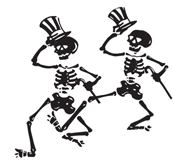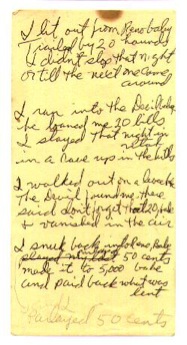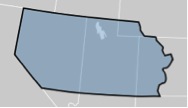By David Dodd
Here’s the plan—each week, I will blog about a different song, focusing, usually, on the lyrics, but also on some other aspects of the song, including its overall impact—a truly subjective thing. Therefore, the best part, I would hope, would not be anything in particular that I might have to say, but rather, the conversation that may happen via the comments over the course of time—and since all the posts will stay up, you can feel free to weigh in any time on any of the songs! With Grateful Dead lyrics, there’s always a new and different take on what they bring up for each listener, it seems. (I’ll consider requests for particular songs—just private message me!)
Once in awhile, writing this blog, I check my list of songs I’ve written about so far, sure that I must have covered this or that particular song, only to be amazed that I haven’t. I mean: “Friend of the Devil”? Come on! It’s the definition of a story song. It might BE the Greatest Story they ever told.
I thought of it today because I recently had the wondrous opportunity to see Robert Hunter play a solo show here in the North Bay Area, and one of the songs he played was “Friend of the Devil.” Along with an amazing selection of other tunes, including rarities like “Doin’ That Rag,” and “Ruben and Cherise.”
There’s a lot of great background to be found in many places, detailing the evolution of the song. Suffice it to say that it was a collaborative effort, and that the title line was not part of the original lyric by Hunter, but was contributed by John Dawson of the New Riders of the Purple Sage. Hunter’s original chorus went: “I set out running but I take my time / It looks like water but it tastes like wine.”
Wow. For Dawson (aka Marmaduke) to have come up with that line—what an amazing inspiration! Here’s how Hunter described it in his online journal back in 2006:
"We all went down to the kitchen to have espresso made in Dawson's new machine. We got to talking about the tune and John said the verses were nifty except for "it looks like water but it tastes like wine" which I had to admit fell flat. Suddenly Dawson's eyes lit up and he crowed "How about "a friend of the devil is a friend of mine." Bingo, not only the right line but a memorable title as well! We ran back upstairs to Nelson's room and recorded the tune.”
So—the line that gives the song its soul, as it were, came from seemingly nowhere (although my vote is for the espresso as a catalyst). Sure, the song describes, in the words of the first-person narrator, an outlaw who is on the run, but the “friend of the devil” idea—that seems big, and truly expands the level of outlawry implied by the overall story.
The other great part of the origin story for the song is that Garcia turned one of Hunter’s verses, originally sung as a verse, into one of the most beautiful bridges in a repertoire full of beautiful bridges. “Got two reasons why I cry away each lonely night…”
Here’s a picture of Hunter’s original handwritten lyrics:
Hunter said once, in an interview, that if he and Garcia had written a song that might become a standard, it was probably “Friend of the Devil.” And I’ve heard it done by enough different bands in every kind of setting, that I have to agree. No other Dead tune gets played quite so often.
The character in the song is on the run—a theme that comes up again and again in Grateful Dead songs from “Sugaree” to “Bertha” to “Jack Straw.” And, as in some other tunes (“Loser,” “Candyman”) the historical setting is some vague place in America’s past. I have speculated that, since he lit out from Reno and then spent the night in “Utah,” it could be that the song was set during the period when Reno was in the Utah Territory. Here’s a map that shows the boundaries of the Territory, with modern-day state boundaries:
So, if the narrator set out running from Reno and then spent the night in Utah Territory (of which Reno was a part), it had to have happened between 1850 and 1896. Other place names in the song provide enticing clues, but I really doubt that Hunter was sitting there with an historical atlas, making sure that future scholars would note no discrepancies. He was giving a sense of the Wild West, with outlaws and jail time and wives in different towns. And that’s what we get.
Hunter, in his performances, has always included a verse not on offer from the Garcia performances:
You can borrow from the devil, you can borrow from a friend
But the devil will give you twenty, when your friend got only ten
It’s a great couplet, and I like to think of it, lately, in terms of mortgage lenders who loaned more than people could afford to pay. Something very satisfying in thinking of the large lenders as satanic.
When the band started slowing up the tempo of the song in a big way in the late 1970s, it took on an entirely new character. And indeed, the song does well at almost any tempo. It can be a blazing bluegrass number, a gentle folksong, or a ponderous and majestic piece, as it was in later years. (If you still have a turntable, you should play “Friend of the Devil” from Dead Set at 45 rpm. Garcia sounds like Dolly Parton!)
Quite a few artists have covered “Friend of the Devil.” I think my favorite is Lyle Lovett on the Deadicated album—he gets something just right about the song. And Tom Petty’s Live Anthology version is great—I especially like the change in the paternity question line from “it don’t look like me” to “she don’t look like me.” Always nice to have a baby referred to as “he” or “she” rather than “it,” even if the use of “it” is consistent with the character of the narrator.
It’s a story song for the ages. One for the campfires and the hoedowns and the tributes and the masses.



